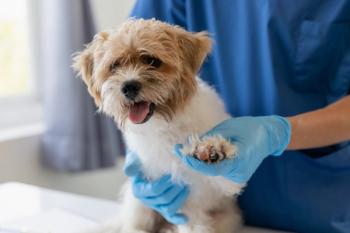
Avian influenza infects flocks in 13 states
More than 21 million birds affected so far in both commercial and backyard flocks.
Highly pathogenic avian influenza (HPAI)-or, more specifically, the novel H5N2 strain-has sickened or caused the culling of more than 21 million chickens, turkeys and pheasants in 13 states so far, according to the U.S. Department of Agriculture Animal and Plant Health Inspection Service (USDA-APHIS). The virus is thought to have entered the United States through the Pacific flyway, which runs from Alaska to western Mexico.
The H5N2 virus was first detected in Washington state in mid-December 2014. Since then it has spread to Arkansas, California, Iowa, Idaho, Kansas, Minnesota, Missouri, Montana, North Dakota, Oregon, South Dakota and Wisconsin. Two other strains, H5N8 and H5N1, have also been found in the Pacific flyway. Some of the hardest-hit states, Iowa, Minnesota and Wisconsin, have declared states of emergency in response to the outbreaks. In addition, the government has approved the use of $330 million in emergency funds to help contain the outbreak, according to Reuters.
Four flyways exist across the United States and serve as travel corridors for migratory birds. One factor influencing the spread of the virus are the large concentrations of virus-carrying migratory waterfowl settling in the hardest-hit areas, like the Mississippi flyway, increasing the likelihood of transmission, says Tim Baszler, DVM, PhD, veterinary pathology professor and director of Washington State University's Washington Animal Disease Diagnostic Laboratory (WADDL), in a university release. WADDL was the first U.S. facility to detect the virus.
Wild birds are able to carry the virus without getting sick, so it travels relatively silently until it makes contact with domestic birds, says Rocio Crespo, DVM, MS, DVSc, DACPV, associate professor of microbiology and pathology at Washington State's College of Veterinary Medicine and chief of the WADDL avian health and food safety branch.
The highly infectious virus spreads rapidly in flocks through the droppings and oral secretions of sick birds. In efforts to respond to the spread the USDA-APHIS follows five steps to assess and contain the virus, according to its website:
> Quarantine: Restricting the movement of poultry and poultry-moving equipment into and out of the control area
> Eradicate: Humanely euthanizing affected flocks
> Monitor region: Testing wild and domestic birds in an area around the quarantine area
> Disinfect: Killing the virus in the affected flock locations
> Test: Confirming that the poultry farm is free of the HPAI virus.
See the map below for detailed information about the outbreaks in each state.
Newsletter
From exam room tips to practice management insights, get trusted veterinary news delivered straight to your inbox—subscribe to dvm360.






